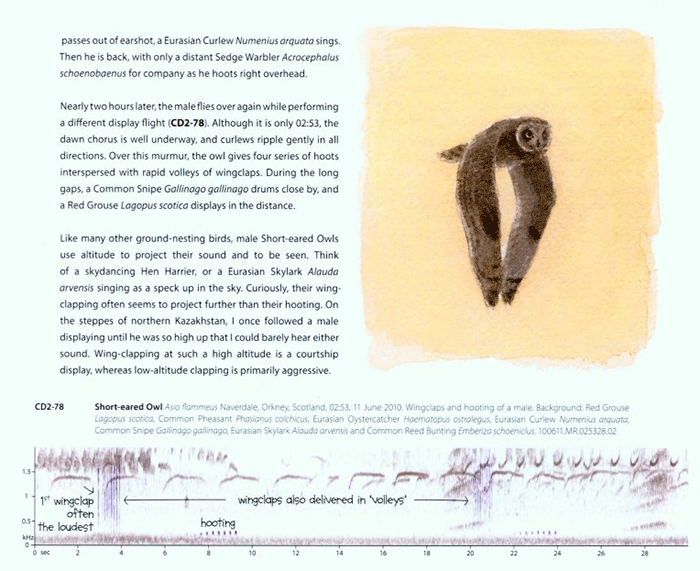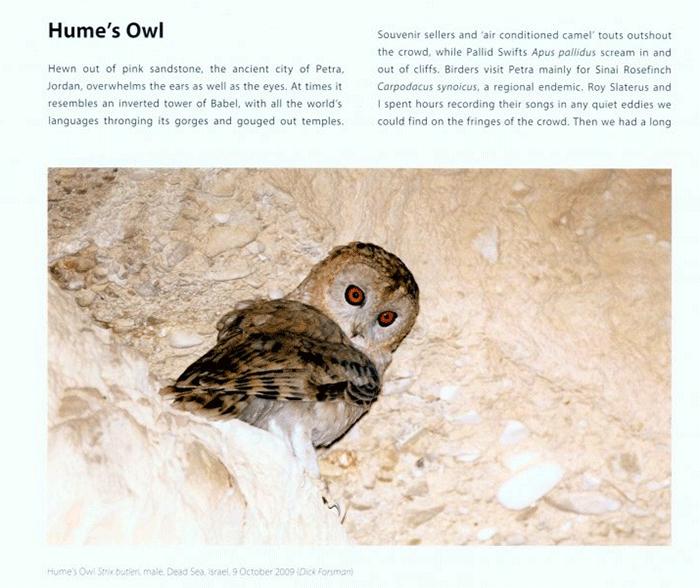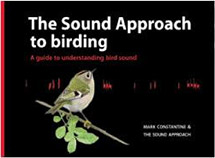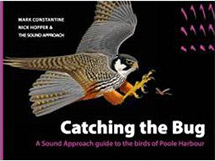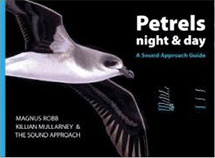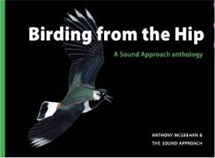Undiscovered Owls
Magnus Robb & The Sound Approach
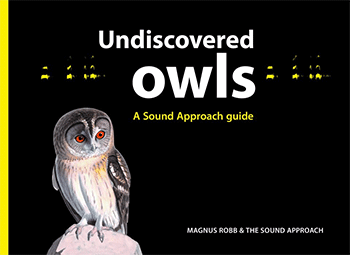
Birdlife's Spoon-billed Sandpiper campaign
With their 2008 ‘Petrels Night and Day’, the Sound Approach team pioneered a whole new sound-based exploration of their chosen subjects. Now, in this new book, this approach is applied to that ever-popular though enigmatic group of birds - the owls.
After a brief Introduction, the book’s nine chapters are devoted to the nine Western Palearctic owl genera, each then subdivided into its constituent species. The bulk of each species account comprises a detailed analysis of its vocalisations, broken down into the various call types of males, females and young. Lightening what might otherwise be quite a dry text are some revealing insights into the team’s adventures in the field, recounting the triumphs and failures which are inevitably part of trying to get close to (and photograph and record) such elusive birds.
The text is supplemented by numbered references to the accompanying CDs and to sonograms which provide a neat graphical illustration of many of the tracks, with the most significant or important aspects clearly annotated. However, whilst the sonograms are highly instructive, it is far more rewarding to sit back and listen to the CDs themselves. These are wonderfully atmospheric, transporting the listener to such fabulous locations as the cosatal marshes of Morocco, the arid mountains of Oman and the boreal forests of Finland. However, the individual tracks are not announced with either a species name or reference number and so the slightest interruption or lapse of concentration means losing your place in the sequence.
The book’s guiding premise is that vocalisations offer an under-explored tool in avian systematics and that, used alongside morphological, ecological, geographical and genetic evidence, they can inform a whole new perspective on taxonomy. Vocal evidence is of particular significance in owls, argue the authors, as their calls are genetically ‘hard-wired’, their differences representing sometimes long periods of independent evolution. However, despite the importance of this aspect of the team’s work and the inevitable interest it will provoke, the taxonomic discussions are tucked away in each of the species accounts and take some finding. Once found, though, they provide a fascinating challenge to traditional taxonomy, presenting nothing less than a wholesale redrawing of species limits in a number of Western Palearctic owls.
Perhaps the most eye-catching proposal is a vocalisations-based split of the Little Owls into two ‘new’ species - our own Little Owl, breeding in northwest Europe (including Britain) and Iberia, and the quaintly-named Cucumiau, comprising the other Athene owls in southern and eastern Europe, North Africa, the Middle East and Asia.
Other proposals include the recognition of three Atlantic Island Barn Owl species - Slender-billed Barn Owl of the eastern Canaries, Madeira Barn Owl and Cape Verde Barn Owl. Nearby, in northwest Africa, the dark, coarsely-marked and vocally distinct ‘Tawny Owls’ are recognised as Maghreb Wood Owl whilst, in the southeast corner of the region, the authors propose Cyprus Scops Owl, Arabian Scops Owl and Arabian Eagle Owl as full species. Transatlantic relationships are also touched on, the authors proposing species status for both members of several species pairs i.e. Tengmalm’s and Boreal Owls, Lapland and Great Gray Owls and Long-eared and Wilson’s Owls.
Perhaps the most exciting of the accounts occur towards the end of the book. The story of the rediscovery of Brown Fish Owl in southern Turkey is well-known but is dramatically reprised here and, of particular interest to those who have already twitched these birds, they are presented here as a new (and therefore staggeringly rare) species - Turkish Fish Owl.
The most dramatic account is kept until last, however. This is of course the story of the recent (re)discovery by the Sound Approach team of a new owl in the Al Hajar mountains of northern Oman. Now named Omani Owl, its discovery has truly captured the birding headlines whilst the subsequent debates over what it actually is have made for fascinating (if somewhat arcane) reading. This is very much a ‘work in progress’ and it will be fascinating to see how our knowledge of the status, distribution and taxonomic position of this bird develops over coming years.
Published: April 2014
The Sound Approach
Softback: Pages: 308
ISBN: 9789081093378
RRP: £39.95
SPECIAL OFFER:
Pay just £34.95 inc FREE p&p when you quote discount code RBA76
Very important please read before ordering: When ordering via WildSounds, the value of the voucher will be deducted from your order when the order is processed. The total displayed on your shopping basket excludes the value of the promo but this will be applied before final payment is taken.
The landscape format of this book mirrors that of ‘Petrels Night and Day’ and whilst this makes for an attractive product it does not sit well in most bookcases. Inside, the layout is clean and attractive with liberal use of colour photographs, including some stunning images of Turkish Fish Owl and a wonderful selection of Omani Owl pictures. To add further visual delight, there are many supremely delicate paintings by Håkan Delin, each one a triumph in the restrained use of colour.
In summary, this is another great example of pioneering, investigative birding by this dynamic team, deploying not just new technology but also the more traditional virtues of imagination and dedication. By looking at (and listening to) owls in new ways and refusing to be constrained by conventional wisdom, they have given us a wholly new perspective on these fascinating but mysterious birds. This will be without doubt one of the most important bird books of the year.
Andrew Stoddart
www.northnorfolkbirds.co.uk
28 April 2015
